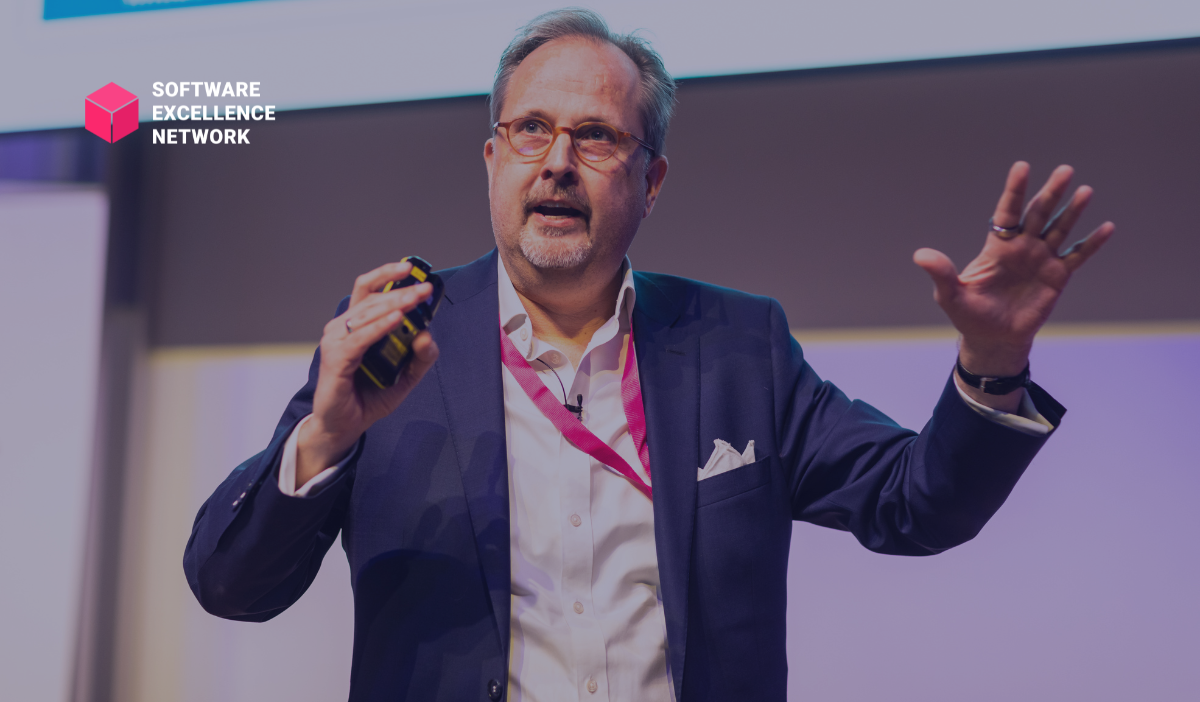
In an increasingly uncertain and fast-paced world, businesses are under immense pressure to modernize their IT strategies, manage resources efficiently, and build resilience. Insights shared during the Navigating Software Production executive exchange by Carsten Rossbach, Senior Partner at Roland Berger, provide a roadmap for organizations to navigate these challenges and adapt to evolving demands effectively.

Effective portfolio management remains a cornerstone for navigating budget reductions and ensuring strategic focus. Organizations must prioritize high-impact projects, especially those tied to regulatory compliance or core business needs, while carefully evaluating their costs and potential ROI.
A common challenge in agile environments is managing cloud consumption and ensuring that innovation doesn’t lead to uncontrolled costs. One case highlighted a company whose “cloud candy store” phenomenon resulted in significant budget overruns. Organizations can mitigate this risk by scrutinizing expenses and re-evaluating non-critical investments, such as costly hardware upgrades, to maximize value without compromising flexibility.
Automation is reshaping business processes and IT operations, with advances in large language models (LLMs) and AI paving the way for deeper integration. The transition from basic RPA bots to sophisticated backend automation underscores the need for organizations to:
With hyper-automation set to play a critical role in corporate transformation programs, businesses must embrace this paradigm shift while building internal capabilities for long-term success.
The geopolitical landscape has disrupted global sourcing strategies for IT talent. The war in Ukraine, previously a major near-shoring hub, has prompted shifts toward alternative regions such as India and Vietnam. However, these shifts bring their own challenges, such as increased costs and resource constraints.
Moreover, geopolitical block-building between major economies adds complexity to global software development. For example, developing software in China for U.S. markets, and vice versa, is becoming increasingly challenging. Companies must reassess their sourcing strategies, ensuring adaptability to evolving geopolitical dynamics while maintaining operational efficiency.
Cybersecurity remains non-negotiable, even amid budget constraints. Increasingly sophisticated and politically motivated cyberattacks, such as those experienced in Ukraine, highlight the need for robust defenses.
Organizations must adopt a proactive stance, safeguarding not only critical infrastructure but also operational technologies (OT). Effective cyber defense strategies should include shared tools and synergies across IT and OT domains to enhance resilience against diverse threat vectors.
Sustainability and regulatory compliance are rising priorities for modern enterprises. CO2 dashboards and similar tools are already being used to track real-time emissions and progress toward net-zero commitments. However, evolving industry standards, especially regarding supply chain emissions, require continued adaptation.
Future regulatory requirements, such as the EU’s green taxonomy and anticipated social taxonomy frameworks, will impose additional reporting obligations. IT departments must play a central role in enabling compliance while leveraging technology to drive broader sustainability initiatives across the organization.
Modernizing IT operating models and fostering alignment with business objectives is critical. Data suggests a strong correlation between organizations with modern IT roles and above-average industry performance. Key actions include:
Volatility and crises are inevitable, but businesses must move beyond reactive measures. Leaders should:
In conclusion, the insights from Carsten Rossbach's masterclass at the Navigating Software Production executive exchange emphasize the importance of balancing operational efficiency, strategic foresight, and adaptability. By embracing hyper-automation, modernizing IT roles, navigating geopolitical complexities, and addressing regulatory demands, organizations can not only survive but thrive in uncertain times. As businesses look ahead, the call to action is clear: stay proactive, build resilience, and prepare for the future with agility and purpose.

The Software Excellence Network is a premier community for executives and decision-makers focused on optimizing software development strategies. It connects industry leaders, fosters knowledge exchange, and provides insights into achieving scalability, efficiency, and innovation in software production. Through events, masterclasses, and collaborative initiatives, the network empowers members to drive transformation and maintain a competitive edge in an increasingly software-defined world.
A Note to Our Readers:
This article offers an overview of the key ideas presented by Carsten Rossbach during his talk. While we’ve captured the main concepts and innovations he shared, the full scope of his insights and examples is best experienced by watching the entire session. For any questions or further information, feel free to reach out to us.
These Stories on Events/Webinars
August-Bebel-Str. 26-53
14482 Potsdam, Germany
hello@seerene.com
+49 (0) 331 706 234 0
Generative AI Seerene GmbH
August-Bebel-Str. 26-53
14482 Potsdam, Germany
hello@seerene.com
+49 331 7062340